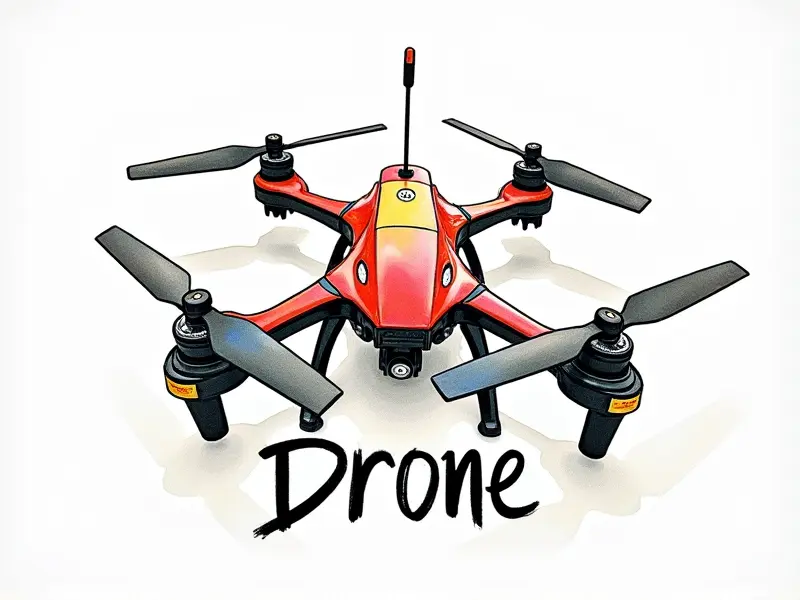How do race drones handle wind?

How FPV Racing Drones Tackle Wind Challenges
FPV (First Person View) racing drones are designed to navigate through challenging environments, including windy conditions. However, wind can significantly impact the performance and stability of these high-speed machines. This article explores how race drones handle wind, providing tips and strategies for pilots to master their craft in gusty conditions.
Mastering Wind with Race Drones
To effectively fly FPV racing drones in windy weather, it's crucial to understand the mechanics of your drone and the nature of wind. Pilots must adapt their flying techniques and make necessary adjustments to ensure stable flight paths. Mastering wind involves not just reacting to gusts but also anticipating them to maintain control.
Tips for Flying Race Drones in Windy Conditions
- Pre-flight Checks: Ensure your drone is tuned and balanced before taking off. Check the propellers, motors, and battery connections to prevent any mechanical issues that could worsen in windy conditions.
- Weight Distribution: Balance the weight of your components evenly across the frame to maintain stability during flight. A well-balanced drone will be more resistant to wind disturbances.
- Pilot Positioning: Keep a steady stance and avoid sudden movements that could affect your control inputs, leading to erratic flight patterns.
Navigating Gusty Conditions with Race Drones
Gusts of wind can be unpredictable and challenging for even the most experienced FPV pilots. To navigate these conditions effectively:
- Use a stable platform or stand to reduce body movement.
- Keep your drone's throttle steady to maintain altitude and avoid sudden drops caused by downdrafts.
- Incorporate small, controlled movements in your flight path to counteract wind forces without losing control.
The Impact of Wind on FPV Racing
Wind can alter the dynamics of a race dramatically. High-speed races require precise navigation and quick reflexes, which can be compromised by strong winds. Understanding how wind affects your drone's performance is key to maintaining competitive edge.
Strategies for Stable Flight in High Winds
- Pitch Control: Adjust the pitch angle slightly to maintain a steady course against headwinds or crosswinds.
- Roll Adjustment: Use roll adjustments to stabilize your drone's lateral movement and prevent side-slipping caused by gusts.
- Yaw Management: Manage yaw inputs carefully to avoid overcorrecting, which can lead to instability and loss of control.
How to Tune Your Drone for Windy Races
Tuning your drone is essential for optimal performance in windy conditions. Focus on the following areas:
- Propeller Size: Larger propellers can provide more lift and stability, but may increase drag.
- Motor Power: Adjust motor power settings to balance between speed and control under wind pressure.
- Battery Capacity: Use higher capacity batteries to ensure consistent performance throughout the race.
Wind Resistance and FPV Racing Drone Design
The design of an FPV racing drone plays a significant role in how it handles wind. Key considerations include:
- Aerodynamics: A streamlined frame reduces drag, making the drone more efficient.
- Fuselage Shape: Designs that minimize surface area exposed to wind can improve stability and maneuverability.
Handling Strong Winds in Drone Races
In extreme conditions, handling strong winds requires a combination of skill, equipment tuning, and strategic flying techniques. Pilots should:
- Focus on maintaining altitude control to avoid terrain obstacles.
- Plan flight paths that take advantage of natural windbreaks or areas with less wind turbulence.
Flying FPV Drones: Dealing with Wind Turbulence
Turbulence can be particularly challenging, as it introduces unpredictable forces on the drone. To handle turbulence:
- Stay calm and steady; avoid overreacting to sudden changes in wind direction or speed.
- Use predictive flying techniques to anticipate gusts and adjust your flight path accordingly.
The Impact of Wind on FPV Drone Stability
Wind significantly affects the stability of an FPV drone, influencing its ability to maintain a steady course. Pilots must be aware of these impacts and make necessary adjustments:
- Yaw Control: Tight yaw control is essential for maintaining direction in strong winds.
- Pitch Adjustment: Fine-tune pitch settings to counteract the lift or drag caused by wind.
Conclusion
Flying FPV racing drones in windy conditions requires a blend of technical expertise and practical experience. By understanding how your drone interacts with wind, tuning it appropriately, and employing effective flying techniques, you can enhance your performance and enjoy the challenges that gusty weather presents.

